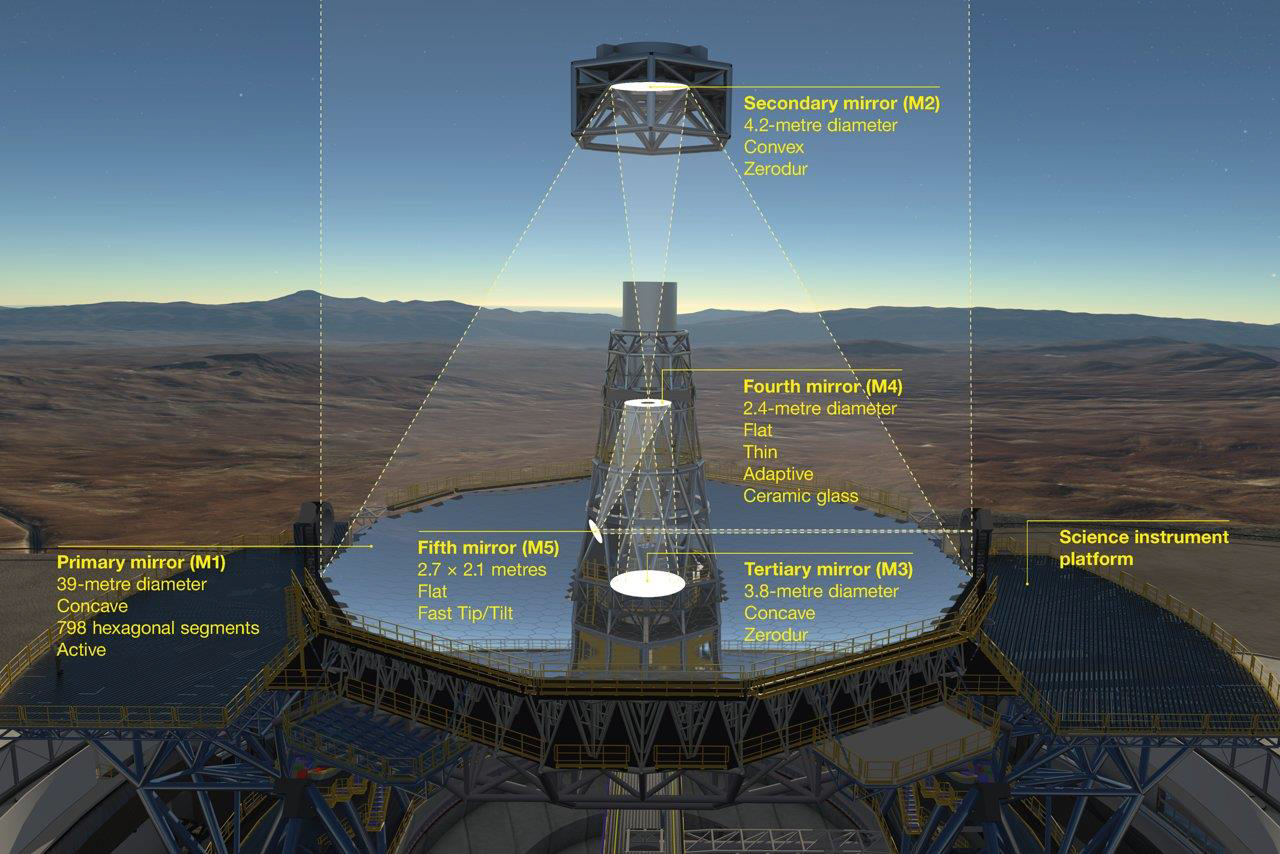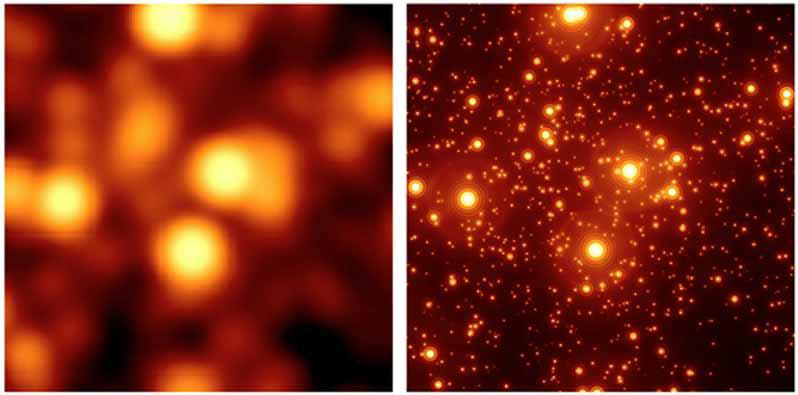HARMONI is a visible and near-infrared (0.46 to 2.45 μm) integral field spectrometer, providing the ELT’s core spectroscopic capability, over a range of resolving powers from R (≡λ/Δλ) ~ 3000 to R~17000. The instrument provides simultaneous spectra of ~31000 spaxels at near-IR wavelengths (~15500 at visible wavelengths), arranged in a 1.3:1 aspect ratio contiguous field. The aspect ratio is particularly suited to “nodding-on-IFU”, an efficient technique for sky-subtraction in the near-IR.
HARMONI is conceived as a workhorse instrument, addressing many of the ELT’s key science cases, and will exploit the ELT’s scientific potential in its early years, starting at first light. At close-to-diffraction limited scales, it will capitalise on the D4 exposure time gain of the ELT, providing unprecedented gains in sensitivity and spatial resolution, which when put together, will transform the landscape in observational visible and near-infrared astronomy. HARMONI has four operational modes, connected to the type of adaptive optics sensing used – LTAO (full correction using multiple laser guide stars with good sky coverage), Single Conjugate AO (SCAO – high Strehl correction using bright natural stars – classical AO), High Contrast AO (augmenting SCAO with additional capabilities to enhance contrast) and no AO (secondary guiding only).
The instrument provides a range of spatial pixel (spaxel) scales and spectral resolving powers, which permit the user to optimally configure the instrument for a wide range of science programs; from ultra-sensitive to diffraction limited, spatially resolved, physical (via morphology), chemical (via abundances and line ratios) and kinematic (via line-of-sight velocities) studies of astrophysical sources. Even in seeing limited conditions (or when AO cannot be used to provide high Strehl ratios), HARMONI provides impressive gains with respect to the current generation of VLT instruments, e.g. a gain of ~20 in speed relative to MUSE at the ESO-VLT for targeted observations. Its high throughput (≥30% average) ensures that scientists can make the most of the precious photons collected by the enormous collecting area of the ELT. HARMONI is conceptually simple (for a 39 m telescope instrument), and will be easy to calibrate and operate, providing the ELT with a “point and shoot” spectroscopic capability. Although the size and mass of the instrument make it challenging to realise, it is based on a proven concept, and requires no significant R&D before it can be built.
Finally, HARMONI will complement and will have a high level of synergy with ALMA and JWST, with similar angular resolution to the former and comparable sensitivity to the latter. With its unique capabilities, HARMONI opens up parameter space that no other instrument, neither at the ELT or any (extremely) large telescope, e.g. JWST, TMT or GMT, can occupy: diffraction limited, medium and high-resolving power imaging spectroscopy from visible to near-infrared wavelengths.

About ELT
ESO’s ELT (Extremely Large Telescope) is a revolutionay optical and infrared ground-base telescope, whose primary mirror will be 39 metres in diameter, making it the world’s largest visible and infrared light telescope in the world.

Apart from its size, it has some other impressive features. For starters, the telescope is fully steerable, with wavefront control and has a retractable dome to protect the mirrors when observations are not being made. The optical design of the telescope (system of three-mirror anastigmat and two deformable mirrors) differs from other designs because of the inclusion of adaptive optics from its conception phase and because the use of five mirrors is unprecedented.

The diffraction limit of the ELT is of the order of 8 to 10 mas, a thousand times smaller than the ‘seeing’ (1 to 2 arc seconds), so to obtain images that take full advantage of the functionalities of the telescope it is imperative to eliminate the effects of ‘seeing’ through adaptive optics systems.

In a nutshell, it will allow further progress in astrophysical knowledge and fundamental physics, a deeper exploration of our Universe by characterising exoplanets, faint stars or galaxies far away and give us a sharper view of cosmic objects than ever before. The leap forwards with the ELT can lead to a paradigm shift in our perception of the Universe, much as Galileo’s telescope did 400 years ago.
Further reading